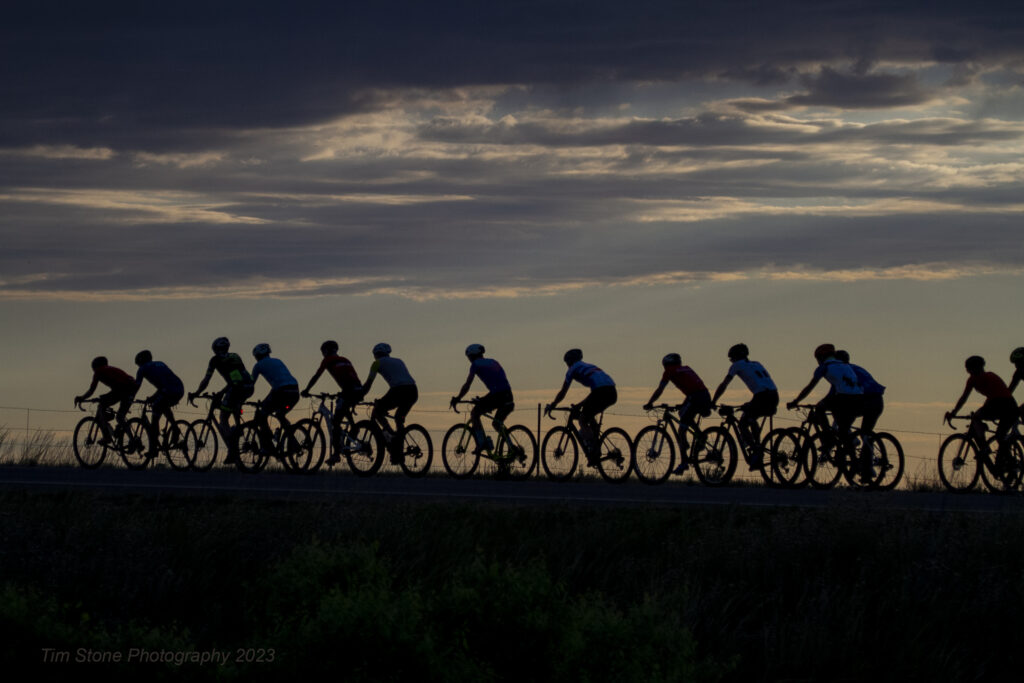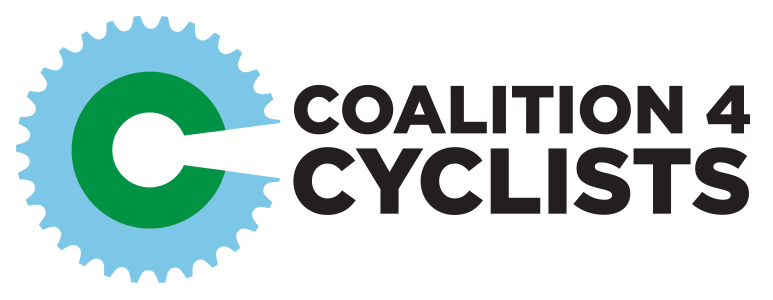Bicycle Colorado has done a nice job forming an advocacy coalition made up of bicycling groups across the state. C4C participates in the group. As of late June, here’s a rough idea of the topics being discussed.
- Driver education / certification / recertification
- More severe penalties for driver infractions
- Intersection requirements like no right turn on red
- Bike lane obstructions (no parking in bike lanes)
- Hard surface bike-ped infrastructure funding on a state level
- Improving hiking and biking trails through a $25 annual fee like OHV fees or similar
- Speed limiter devices for “super speeders” or repeat offenders
- Strengthen the distracted driving hands-free device law
- Automated enforcement for distracted driving
- A 4′, 5′, or 6′ to pass law
- Safety Stop left turn at red light caveat
- Study the economic impact of cycling
- Change the “Share The Road” license plate to “3′ to Pass”
C4C has a working position on these topics which is summarized below. Alternatively, the real question for C4C is how to manage these in the environment of significant budget cuts in state government and how to approach the topics as a whole.
“I” below refers to Matt Muir, C4C’s staff person. I arrive at these positions through a variety of information from the community, C4C’s board and committees, evidence, data, studies, best practices, and peer groups. I’m always open to conversation, matt@c4community.org.
Driver Certification
The U.S. lags behind peer nations for driver certification standards. C4C has been exploring a voluntary, opt-in Annual Colorado Driver’s Update video that could be delivered through the MyColorado app. It could be 90-150 seconds in duration and cover new law like the hands-free device law; problem areas like traction law, intoxication, distraction, and speeding; and have links to more information.
Even if only 10% of Colorado’s five million licensed drivers viewed the video, that would be 500,000 drivers on a yearly basis who shifted to a more informed state regarding the contract one enters into upon operating a vehicle on public roads.
More Severe Penalties for Driving Infractions
C4C’s preference is to focus on preventative measures over reactive ones. Laws that are honored only in the breach have an effect only after it’s too late to prevent adverse safety outcomes. C4C would prefer to shift the conversations to ones about how to manage safety in a proactive manner.
Intersection Requirements Like No Right Turn on Red
Perhaps an unpopular position, this proposal runs the risk of micro-managing municipalities across Colorado’s diverse transportation settings. Right turns on red are a problem according to the statistics but that may be more of a matter of managing them in urban settings. If such a rule were to be applied statewide, it would result in resistance from smaller municipalities or municipalities where there’s a good alternative for bike and pedestrian users.
Bike Lane Obstructions
I would like to understand this topic better before taking a position.
Hard Surface Bike-ped Infrastructure Funding
C4C’s position is that this is not a funding problem, it’s a planning and design problem. Take Boulder County and its leading standard to make all its planning and design network multi-modal in the first place. That means that in Boulder County, everything that flows into the funding phase is designed for multiple modes of travel that are all connected.
Funding will always fluctuate, it’s the design and use of right-of-way that determine outcomes.
Improve Hiking and Biking Trails with a $25 Annual Fee like OHV Fees
This general idea has been around for a while. It creates controversy and opposed positions in, for example, the mountain bike advocacy world. I (Matt) think that if it could be well planned it would be worth trying.
Speed Limiters for Repeat Offenders or “Super Speeders”
Discussions refer to these devices being used elsewhere with good outcomes. C4C favors this idea.
Strengthen the Distracted Driving / Hands-free Device Law
This one needs more conversation. For one thing, law enforcement is not magic, they’re already working hard, and pulling people over is complicated for law enforcement. Making a more informed decision would be helpful on this topic.
Automated Enforcement for Distracted Driving
Europe has apparently figured out how to do this. C4C is open to exploring this more.
A 4′, 5′, or 6′ to Pass Law
The E.U.’s equivalent is 1.5 meters (4.9 feet). A couple states have a 4′ to pass law. One of the Dakotas reportedly has 3′ under 35 MPH and 6′ over 35 MPH. These ideas are worth exploring.
The Safety Stop’s Prohibition on Cyclists Turning Left on Red
The caveat on cyclists not being permitted to turn left on red caught a lot of folks by surprise including me. For now, I think it’s a good idea to leave the law as is. Here’s why, queued or queuing contra-traffic, especially in an urban setting, conflicts with a cyclist turning left at a red light.
Study the Economic Impact of Cycling
Wary of more studies, I’m neutral on this idea. I’d rather plan for what we want to be than create another study.
Change the “Share The Road” License Plate to “3′ to Pass”
“Share The Road” has long been described as the start of an argument. Yes, let’s change the license plate.
A Statewide Standardized Electronic Crash Report
This is a topic that I’ve pursued. It would change the current amalgam of practices with a unified system that would support Colorado’s 220+ law enforcement agencies (resourced and under-resourced alike), standardize response protocols, save the state money, and shift crash data to its elevated purpose which is preventative crash analysis.
To their great credit, the Denver Regional Council of Governments is exploring this idea and putting real work behind it. Thanks to the Boulder County Sheriff’s Office which has also lent a little support to the idea and is quick to point out that it would support agencies with fewer resources.



